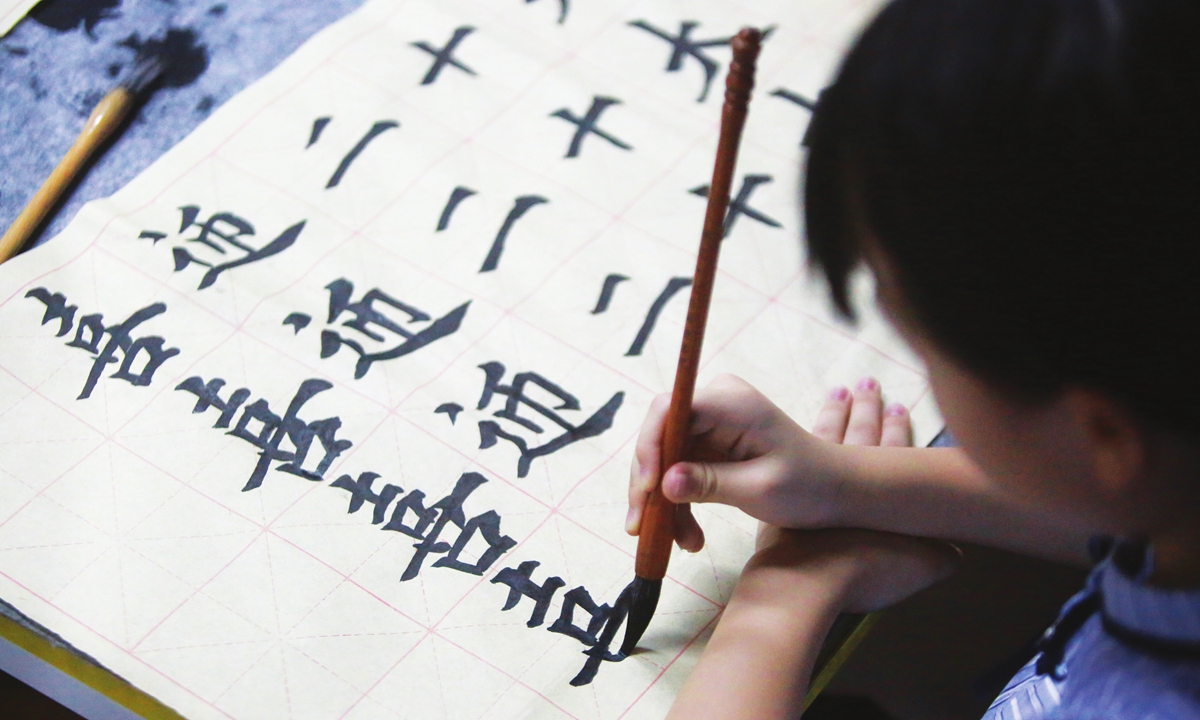
A child practices Chinese calligraphy in Yangzhou, Jiangsu Province. Photo: IC
Chinese calligraphy: transforming a means of communication into an art formCalligraphy is the traditional art of writing Chinese characters and an important icon of Chinese culture.
With a history of more than 3,000 years, calligraphy in China evolved along with the development of Chinese characters.
The are five major scripts used in Chinese calligraphy, namely the seal script (zhuanshu), the clerical script (lishu), the regular script (kaishu), the semi-cursive script (xingshu) and the cursive script (caoshu).
Created during the Shang Dynasty (c.1600BC-1046BC), the seal script can be divided into the large seal script (oracle bone inscriptions on animal bones, stones and Zhouwen) and the small seal script. The small seal script established in the Qin Dynasty (206BC-221BC) was a script simplified from the large seal script and features rectangular shaped characters, equal width of horizontal and vertical strokes and a symmetrical structure.
In the Eastern Han Dynasty (25-220), this script was further simplified into the wide and flat clerical script, or lishu. Whereas the graphical structure of many early Chinese characters were pictographic in nature, in the clerical script the components that made up characters were simplified to make them easier to write.
The regular script was a further simplified script that matured during the Northern Wei Dynasty (386-534). Featuring a rectangular shape with even horizontal and straight vertical strokes, this script was regarded as the "model" (kai) for Chinese characters and has been passed down until today. Based on the regular script, the semi-cursive script developed for faster writing and became popular during the Eastern Jin Dynasty (317-420). The cursive script is even more flexible but sometimes reaches the point in which individual characters are unidentifiable.
The main tools of Chinese calligraphy are the brush, paper, an ink stick and ink slab, together known as the "Four Treasures of the Study."
According to archaeological discoveries, the earliest writing brush was made in the Shang Dynasty. The rise of Chinese calligraphy as an art form should be attributed to paper making in the Eastern Han Dynasty, one of China's "four great inventions."
For centuries, Chinese characters were more of a means of communication than art. However, over the course of time, many famous calligraphers such as Wang Xizhi, Ouyang Xun and Zhao Mengfu turned writing into art and established different schools of calligraphy. Their masterpieces can still be seen in books, museums or on stone tablets today.
To preserve this cultural treasure, calligraphy was listed as China's national cultural heritage in 2008 and inscribed on the Representative List of the Intangible Cultural Heritage of Humanity by UNESCO in 2009.
Global Times

